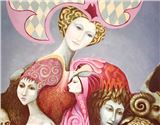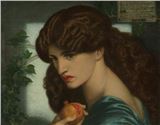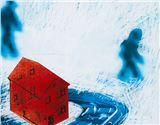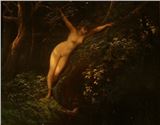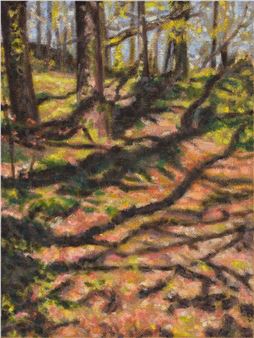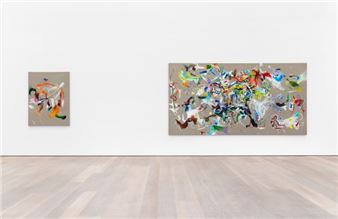A Tale of Two Worlds. Experimental Latin American Art in Dialogue with the MMK Collection 1940s-1980s
In one of its largest exhibitions ever the MMK Museum für Moderne Kunst Frankfurt am Main is collaborating with the Museo de Arte Moderno de Buenos Aires (Moderno) in Argentina. The exhibition will accommodate some 500 artworks from private and public collections by 100 artists and collectives from Latin America, the United States and Europe.
A Tale of Two Worlds sets out to establish a dialogue between two distinct narratives in Western contemporary art over the five decades spanning the 1940s and the 1980s: the European-North American canon - as represented in the MMK Collection - and Latin American experimental art. The exhibition is structured as a stream of conversations, whereby topics relevant to the history of experimental art practices in Latin America are presented in dialogue with artworks from the MMK Collection. The project has been conceptualized and curated over the past year and a half between two cities - Buenos Aires and Frankfurt - and has a strong Southern perspective. Indeed, it marks the first time a European Museum collection has allowed itself to be re-examined by curators of Latin American art. The project is an answer to the call by the Kulturstiftung des Bundes (German Federal Cultural Foundation) on major museums in Germany to endow their collections with a more global perspective.
For some years now the MMK's exhibition programme and collection policy has opened up its view to non-European perspectives on international contemporary art and critically questioned the socio-political conditions of art in a globalized world.The interrelated perspectives of two continents and cultures represented in A Tale of Two Worlds present the MMK with a chance to see its own collection from a striking new angle. Although emerging from divergent political, economic and historical contexts, the art on show will reveal parallel trajectories, crossover points and contradictions.
While the MMK collection from the 1960s and 1970s focuses on European and North American art, the period of Latin American art addressed in this exhibition is somewhat longer: it starts in 1944, the year of the first exhibition of the new Concrete Art movements in Argentina, and continues until the end of the military dictatorships in the late 1980s. Through the example of avant-garde artists from Latin America, the USA and Europe the exhibition attempts to locate the precise tipping point in the transition from modern to contemporary art. It foregrounds various forces of change in order to illustrate this moment of transition, when modernist models collapsed. It focuses on moments of empathy, shared concerns and intellectual bonds between artists from different parts of the world, as well as moments that emerge as counterpoints or challenges, or as tensions between different historical experiences.
Close collaboration between the Moderno and MMK curators is essential for the project, since both institutions are subjecting their pre-existent outlooks to a process of revision and allowing an alternate narrative to be told. This process consciously questions and reconsiders the history of art, their positioning as institutions and their collection practices.

Recommended for you
In one of its largest exhibitions ever the MMK Museum für Moderne Kunst Frankfurt am Main is collaborating with the Museo de Arte Moderno de Buenos Aires (Moderno) in Argentina. The exhibition will accommodate some 500 artworks from private and public collections by 100 artists and collectives from Latin America, the United States and Europe.
A Tale of Two Worlds sets out to establish a dialogue between two distinct narratives in Western contemporary art over the five decades spanning the 1940s and the 1980s: the European-North American canon - as represented in the MMK Collection - and Latin American experimental art. The exhibition is structured as a stream of conversations, whereby topics relevant to the history of experimental art practices in Latin America are presented in dialogue with artworks from the MMK Collection. The project has been conceptualized and curated over the past year and a half between two cities - Buenos Aires and Frankfurt - and has a strong Southern perspective. Indeed, it marks the first time a European Museum collection has allowed itself to be re-examined by curators of Latin American art. The project is an answer to the call by the Kulturstiftung des Bundes (German Federal Cultural Foundation) on major museums in Germany to endow their collections with a more global perspective.
For some years now the MMK's exhibition programme and collection policy has opened up its view to non-European perspectives on international contemporary art and critically questioned the socio-political conditions of art in a globalized world.The interrelated perspectives of two continents and cultures represented in A Tale of Two Worlds present the MMK with a chance to see its own collection from a striking new angle. Although emerging from divergent political, economic and historical contexts, the art on show will reveal parallel trajectories, crossover points and contradictions.
While the MMK collection from the 1960s and 1970s focuses on European and North American art, the period of Latin American art addressed in this exhibition is somewhat longer: it starts in 1944, the year of the first exhibition of the new Concrete Art movements in Argentina, and continues until the end of the military dictatorships in the late 1980s. Through the example of avant-garde artists from Latin America, the USA and Europe the exhibition attempts to locate the precise tipping point in the transition from modern to contemporary art. It foregrounds various forces of change in order to illustrate this moment of transition, when modernist models collapsed. It focuses on moments of empathy, shared concerns and intellectual bonds between artists from different parts of the world, as well as moments that emerge as counterpoints or challenges, or as tensions between different historical experiences.
Close collaboration between the Moderno and MMK curators is essential for the project, since both institutions are subjecting their pre-existent outlooks to a process of revision and allowing an alternate narrative to be told. This process consciously questions and reconsiders the history of art, their positioning as institutions and their collection practices.
Artists on show
- Adolfo Bernal
- Albert Georg Riethausen
- Alberto Greco
- Alberto Heredia
- Alejandro Puente
- Alfredo Hlito
- Alighiero Boëtti
- Ana Mendieta
- Andy Warhol
- Anna Maria Maiolino
- Antonio Caro
- Arte Destructivo
- Arthur Bispo do Rosário
- Artur Alípio Barrio de Sousa Lopes
- Augusto de Campos
- Barry Le Va
- Beatriz González
- Ben Vautier
- Blinky Palermo
- Bruce Nauman
- Carlos María Rhod Rothfuss
- Carmelo Arden Quin
- Charlotte Posenenske
- Cildo Meireles
- Claes Oldenburg
- Cy Twombly
- David Lamelas
- Ed Ruscha
- Edgardo Antonio Vigo
- El Techo de la Ballena
- Flávio de Carvalho
- Francis Bacon
- Franz Erhard Walther
- Franz Mon
- Fred Sandback
- Gego
- Geraldo de Barros
- Gerhard Richter
- Grete Stern
- Gyula Kosice
- Heinz Kreutz
- Hélio Oiticica
- Hermann Goepfert
- Hildegard Weber
- Jasper Johns
- John Chamberlain
- Joseph Beuys
- Juan del Prete
- Juan Downey
- Juan Melé
- Karl Otto Götz
- Kenneth Kemble
- Kenneth Noland
- Lenora de Barros
- León Ferrari
- Leopoldo Maler
- Lidy Prati
- Liliana Maresca
- Liliana Porter
- Lothar Baumgarten
- Lotty Rosenfeld
- Lucio Fontana
- Luis Camnitzer
- Luis Felipe Noé
- Luis Pazos
- Lygia Clark
- Lygia Pape
- Manolo Millares
- Manuel Casanueva
- Marcel Broodthaers
- Marcel Duchamp
- Margarita Paksa
- Maria Eugenia Crenovich Yente
- Marta Minujin
- Martin Blaszko
- Mathias Goeritz
- Mira Schendel
- Nicolás García Uriburu
- On Kawara
- Oscar Bony
- Otto Greis
- Pablo Suarez
- Paul Almasy
- Peter Roehr
- Piero Manzoni
- Raúl Lozza
- Ricardo Carreira
- Roy Lichtenstein
- Ruben Santantonin
- Teresa Burga
- Thomas Bayrle
- Tomás Maldonado
- Ulises Carrión
- Victor Grippo
- Walter De Maria
- Willys de Castro
- Yves Klein

 ARTISTS
ARTISTS

